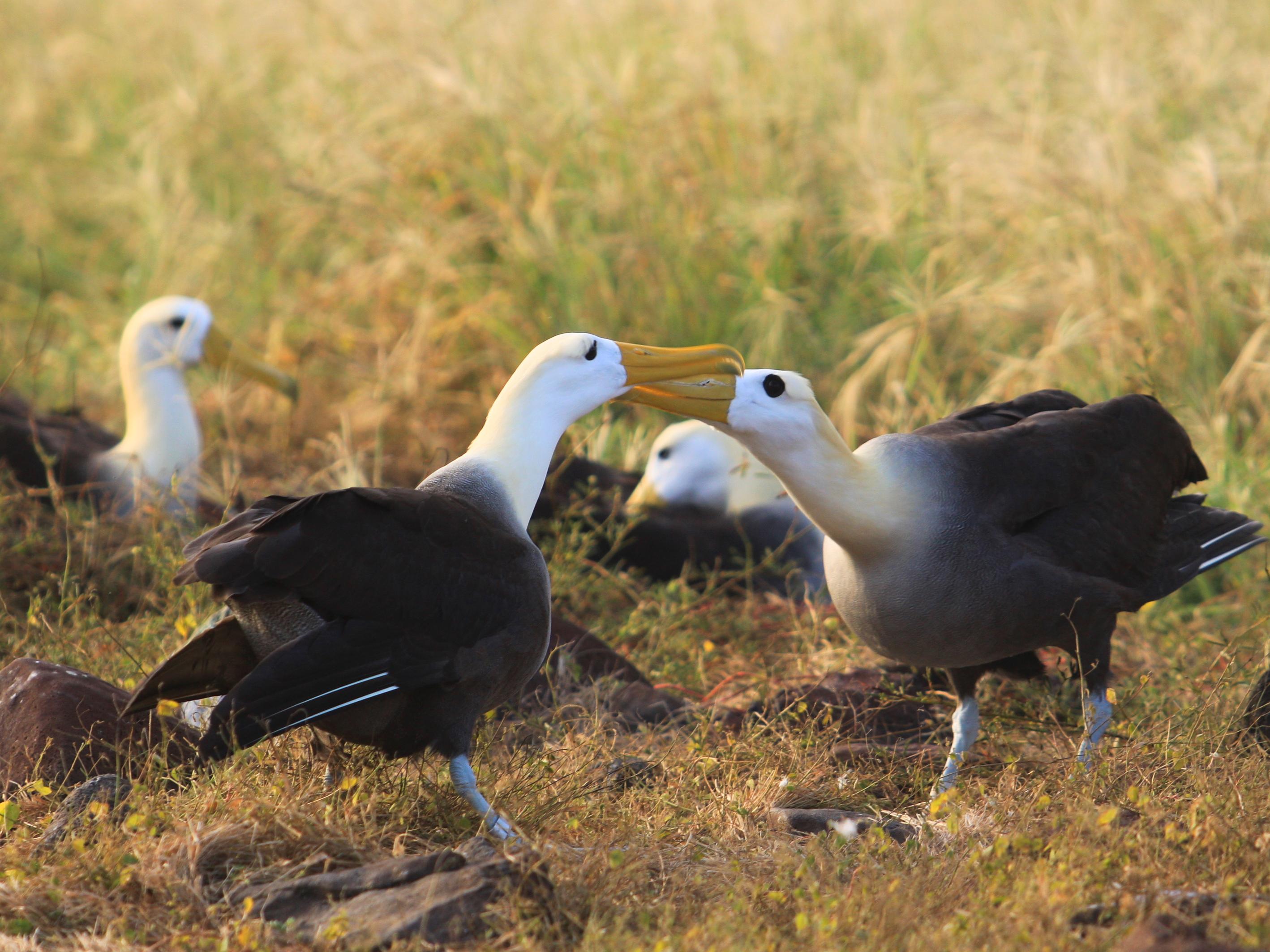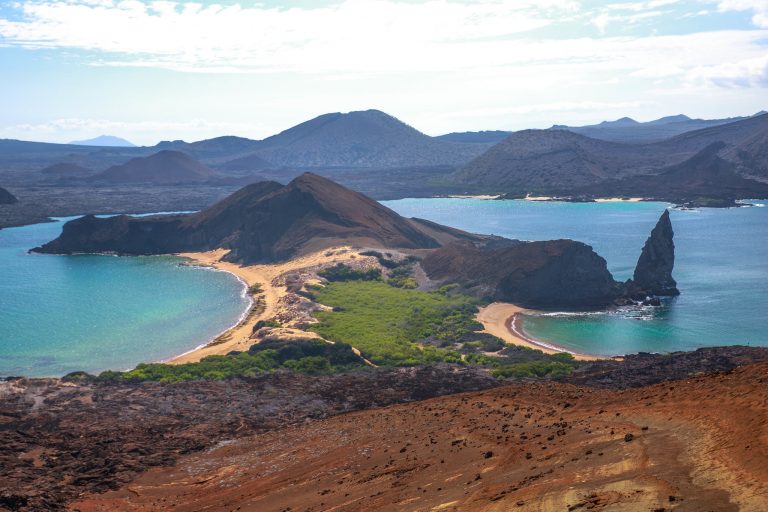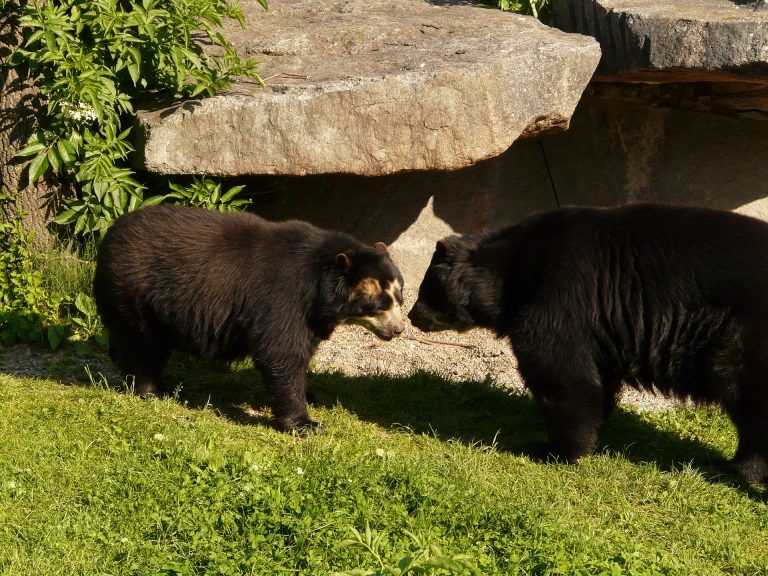The Galapagos Archipelago is a cherished part of the world for scientists, tourists and nature lovers, given its extraordinary biodiversity and delicate ecosystems that cannot be replicated anywhere else. However, a lot of the precious flora and fauna found across these islands are under threat. In terms of wildlife, there are 22 endangered species in the Galapagos and more than 50 that are critically endangered, for various reasons including climate change, human activity and invasive species. However, recent laws and conservation projects in the Galapagos are helping to protect the flora and fauna of the archipelago, with the aim to educate people and keep all populations healthy so that they can continue to thrive and be appreciated for many years to come.

Surtrek – Marine Iguana – Endangered Species in the Galapagos
Endangered species in the Galapagos – causes
A combination of causes has led to the increase of endangered species in the Galapagos. There is no denying that climate change has played a huge role in threatening wildlife. They are so unique because they have evolved over millions of years in remote ecosystems, far away from the rest of the world, allowing them to develop their own characteristics according to their habitat. But the changes in climate are unfolding at an unprecedented rate, and Galapagos creatures are struggling to keep up in such a short amount of time.
Then there are the invasive species that are threatening the islands. In some cases, invasive species are able to consume more resources than those that are endemic, and in others, they actually prey on species that historically have not needed to worry about predators. Another cause is human activity, including urbanisation (leading to demand in construction and agriculture), pollution, hunting, mistreatment of natural resources and tourism, although today laws and regulations are in place to ensure that the Galapagos is a sustainable destination for respectful visitors to these wonderful shores.

Surtrek – Sally Lightfoot Crab – Endangered Species in the Galapagos
Endangered species in the Galapagos – land
Perhaps the most famous Galapagos land-based resident is the Giant Tortoise, a gentle creature that lives for around hundred years and lives on plants like grass, fruit and cacti. They are threatened by invasive species like rats, dogs and cats, that prey on Tortoise hatchlings and eggs, but they also compete for food with goats. What’s more, in the past, sailors and pirates would actually hunt tortoises, leading to a huge decline in their population. Then there are critically endangered bird species in the Galapagos, including the Mangrove Finch, Floreana Mockingbird, Waved Albatross and the Medium Tree-finch, of which there are only 1,700. As well as being affected by loss of habitat (due to agricultural development), the Medium Tree-finch is one of the many Galapagos birds to be threatened by invasive species.

Surtrek – Giant Tortoise – Endangered Species in the Galapagos
Endangered species in the Galapagos – sea
The creatures that dwell in the Galapagos’ beautiful seas are suffering from water pollution, over fishing and temperature increases caused by human activity. For instance, the iconic Marine Iguana now struggles to regulate its body temperature when on land, while Sea Lions and Galapagos Penguins fall victim to fishing bycatch, among many other animals. This happens when creatures of the sea get caught in huge nets (that are actually fishing for other species). Then there are endangered species in the Galapagos that are hunted for their meat, such as Sea Turtles and Whale Sharks, who are targeted for their fins and oil.

Surtrek – Sea Lions – Endangered Species in the Galapagos
Conservation work in the Galapagos
The dwindling of Galapagos species is devastating, but new measures, conservation projects and laws are helping to rescue these wonderful creatures. Both the Galapagos National Park and Charles Darwin Foundation have played a critical role in improving the ecosystems of the Galapagos through education, research and technical advances. The Charles Darwin Research Station on the island of Santa Cruz is a science and research centre that tourists can visit to learn more about the efforts and achievements of the Charles Darwin Foundation, a key part of any trip to the Galapagos.
There are also breeding and rehabilitation programmes, including the Tortoise Breeding Centre on Isabela Island, as well as projects to eradicate invasive species in order to protect endemic species that are preyed on. Since the black rat was eradicated from Pinzon Island, the first Pinzon Tortoise was born in a hundred years, a huge achievement for Galapagos conservation. What’s more, a lot of tracking work is taking place to better understand the behaviour of endangered species in the Galapagos and find solutions to protect them. These include migrating Whale Sharks, Waved Albatrosses and Giant Tortoises; little is known about these gentle giants between their early years and old age, so tagging is crucial to learn more about them.

Surtrek – Waved Albatross – Endangered Species in the Galapagos
One of the most important strategies of all, when it comes to saving endangered species in the Galapagos, is education. Spreading awareness of these critical issues, gaining support from locals and visitors alike, and encouraging every individual to play their part in ensuring that the archipelago is eco-friendly, is a huge step forward for the sustainability of the Galapagos, and its amazing flora and fauna.
Visit the Galapagos on an eco-friendly, tailormade tour with Discover Your South America – our trusted partners are committed to the sustainability and conservation of these amazing islands, just like we are. Customise your Galapagos trip by clicking here and choosing which template you prefer, or call us on 1 866 978 7398 (Canada and USA) or 080 8189 0438 (UK) to talk to an expert, and Discover Your South America with Surtrek!




Leave a Comment
You must be logged in to post a comment.